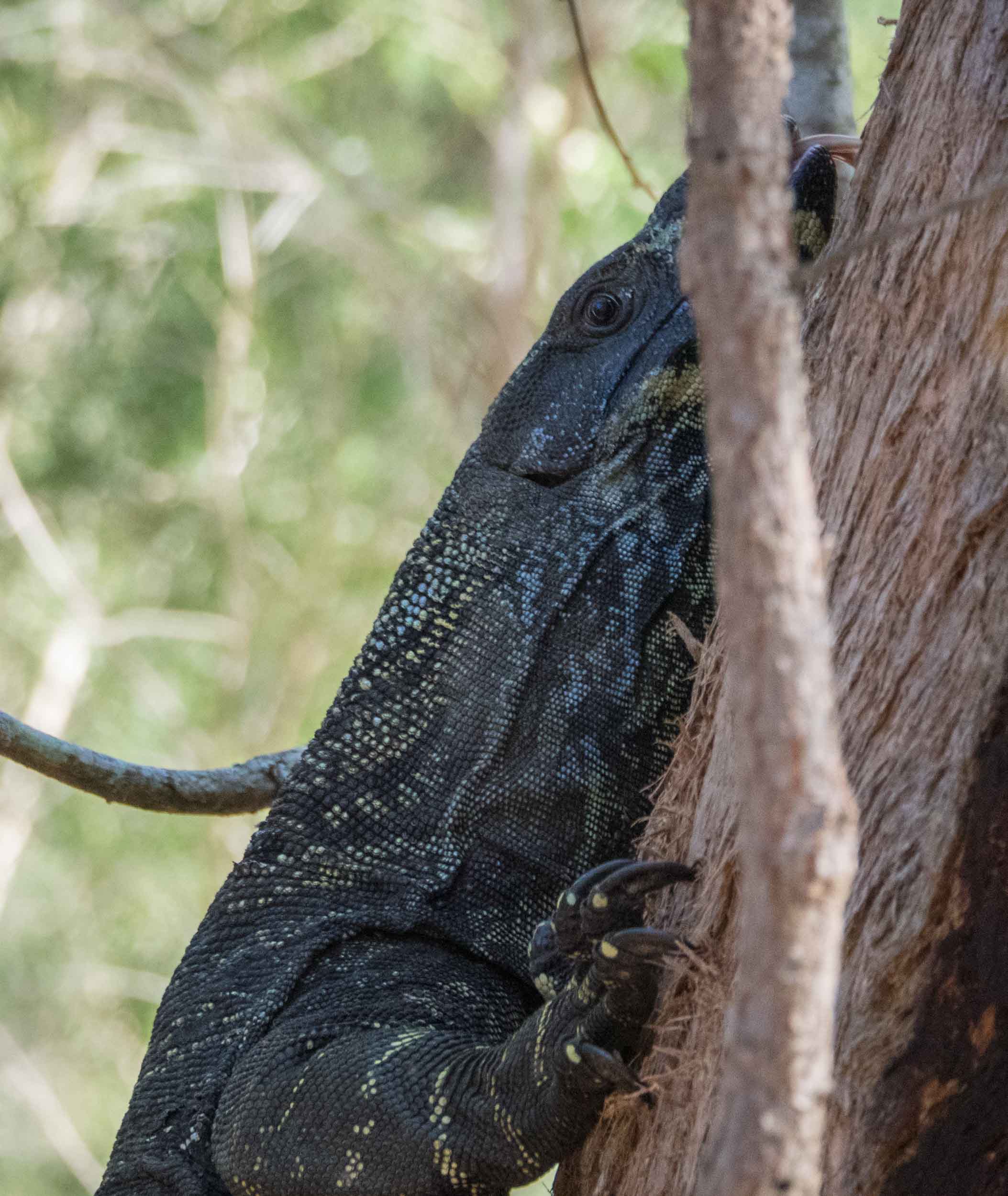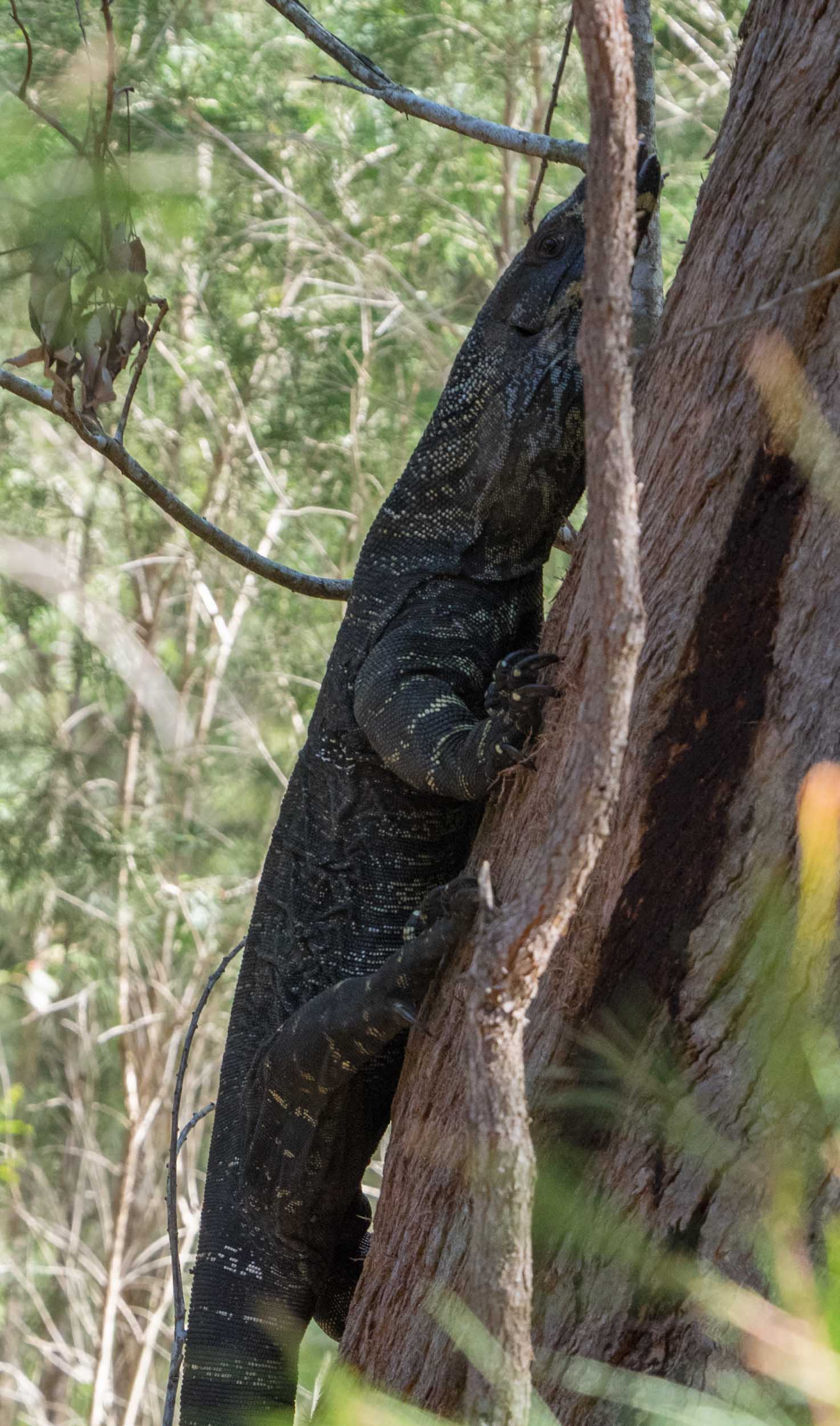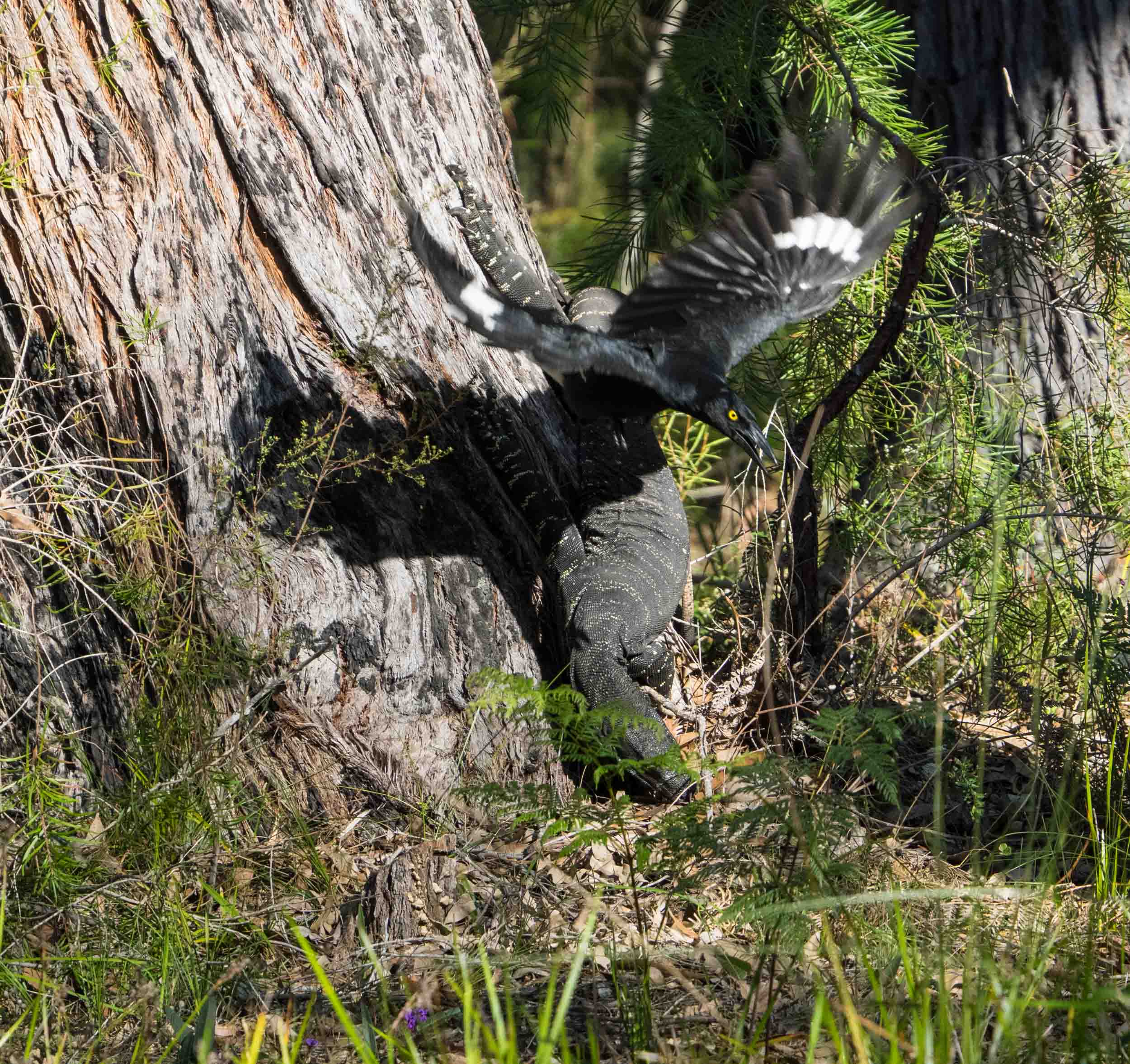Lace monitor recovery

The local 'goanna' species is Varanus varius - commonly called the 'Lace Monitor' or 'Tree Goanna'. There are 25 Varanus species in Australia, collectively known as goannas. Varanus varius is the second largest, surpassed only by Varanus giganteus (the 'Perentie') of remote, arid parts of northern Australia.
Lace monitors are a common sight in the southern forest, particularly during the warmer months. They largely disappear during Winter. Apparently in our climate they retreat to a 'thermal refuge' such as a burrow or hollow log, emerging only rarely to sun bask, and never for very long.
Lace Monitor (Varanus varius) - imaged in January
So when I noticed a huge, sad looking carcass lying on the clifftop in mid August, I assumed that this goanna had starved over Winter, and died.
However, when I checked the following morning there was absolutely no trace of the animal. It seemed unlikely that it had been eaten - there were no 'bits' left, and we don't have many predators large enough to carry off something this big. Perhaps, I thought, it was alive after all and had returned to its burrow (?) We nicknamed it 'Smaug'.
And my hypothesis gained some support a month later.
Just metres from where I'd seen Smaug in August, I came upon a much smaller goanna - definitely dead! - being torn apart and consumed by a much, much larger one. And the big guy looked suspiciously like Smaug!

By the time I fetched my camera and returned to the scene, very little was left of the small carcass. A very well-fed 'Smaug', annoyed by my return, retreated up the nearest tree. He didn't climb far, though, dragging such a fat belly.
Goannas are highly efficient garbage disposals. Animal carcasses, including kangaroos and wombats, are rapidly devoured by these voracious lizards.














